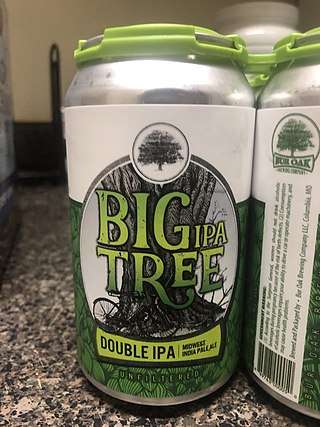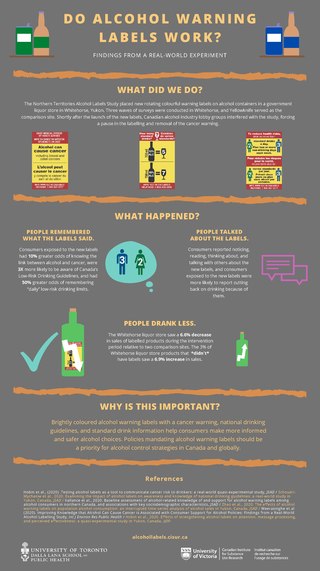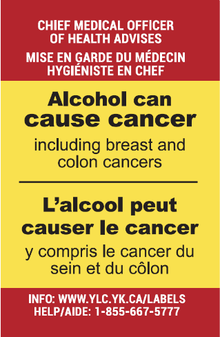The long-term heavy consumption of alcohol can cause severe detrimental effects. Health effects associated with alcohol intake in large amounts include an increased risk of developing an alcohol use disorder, malnutrition, chronic pancreatitis, erectile dysfunction, heart failure, atrial fibrillation, gastritis, stomach ulcers, alcoholic liver disease, certain types of dementia, and several types of cancer. In addition, damage to the central nervous system and peripheral nervous system can occur from chronic heavy alcohol consumption. There is also an increased risk for accidental injuries, for example, those sustained in traffic accidents and falls. Studies show that individuals with heavy substance use have a much higher risk of having other disorders. A cross-sectional observational study found evidence that people who used substances had the highest risk for five of the disorders studied. However, even light and moderate alcohol consumption increase the risk for developing certain types of cancer. Among women, light drinkers have a four percent increase risk of breast cancer, while moderate drinkers have a 23 percent increase in risk of the disease.

Drinking culture is the set of traditions and social behaviors that surround the consumption of alcoholic beverages as a recreational drug and social lubricant. Although alcoholic beverages and social attitudes toward drinking vary around the world, nearly every civilization has independently discovered the processes of brewing beer, fermenting wine and distilling spirits.

A standard drink or unit of alcohol is a measure of alcohol consumption representing a fixed amount of pure alcohol. The notion is used in relation to recommendations about alcohol consumption and its relative risks to health. It helps to educate alcohol users. A hypothetical alcoholic beverage sized to one standard drink varies in volume depending on the alcohol concentration of the beverage, but it always contains the same amount of alcohol and therefore produces the same amount of drunkenness. Many government health guidelines specify low to high risk amounts in units of grams of pure alcohol per day, week, or single occasion. These government guidelines often illustrate these amounts as standard drinks of various beverages, with their serving sizes indicated. Although used for the same purpose, the definition of a standard drink varies from country to country.

Alcohol advertising is the promotion of alcoholic beverages by alcohol producers through a variety of media. Along with nicotine advertising, alcohol advertising is one of the most highly regulated forms of marketing. Some or all forms of alcohol advertising are banned in some countries. There have been some important studies about alcohol advertising published, such as J.P. Nelson's in 2000.

Alcohol Justice is a San Rafael, California-based non-profit advocacy, research and policy organization describing itself as "the industry watchdog." The Marin Institute was renamed and re-branded as Alcohol Justice in 2011; it was originally named The Marin Institute for the Prevention of Alcohol and Other Drug Problems.
George A. Hacker is an American lawyer who has headed the Alcohol Policies Project of the Center for Science in the Public Interest (CSPI) for three decades. He is co-chair of the Coalition for the Prevention of Alcohol Problems, whose members include the National Council on Alcoholism and Drug Dependence (NCADD) and many other public health and prevention groups.
Alcohol education is the practice of disseminating information about the effects of alcohol on health, as well as society and the family unit. It was introduced into the public schools by temperance organizations such as the Woman's Christian Temperance Union in the late 19th century. Initially, alcohol education focused on how the consumption of alcoholic beverages affected society, as well as the family unit. In the 1930s, this came to also incorporate education pertaining to alcohol's effects on health. For example, even light and moderate alcohol consumption increases cancer risk in individuals. Organizations such as the National Institute on Alcohol Abuse and Alcoholism in the United States were founded to promulgate alcohol education alongside those of the temperance movement, such as the American Council on Alcohol Problems.

Excessive alcohol intake is associated with an elevated risk of alcoholic liver disease (ALD), heart failure, some cancers, and accidental injury, and is a leading cause of preventable death in industrialized countries. Some studies have suggested that one drink per day may have cardiovascular benefits. However, these studies are controversial, and the common view is that no level of alcohol consumption improves health. There is far more evidence for the harmful effects of alcohol than for any beneficial effects. It is also recognized that the alcohol industry may promote the unsubstantiated benefits of moderate drinking.

Alcohol causes cancers of the oesophagus, liver, breast, colon, oral cavity, rectum, pharynx and laryngeal cancers, and probably causes cancers of the pancreas. Consumption of alcohol in any quantity can cause cancer. The more alcohol is consumed, the higher the cancer risk, and no amount can be considered safe. Alcoholic beverages were classified as a Group 1 carcinogen by the International Agency for Research on Cancer (IARC) in 1988.

Michael F. Jacobson, who holds a Ph.D. in microbiology from Massachusetts Institute of Technology, is an American scientist and nutrition advocate.
Alcohol has a number of effects on health. Short-term effects of alcohol consumption include intoxication and dehydration. Long-term effects of alcohol include changes in the metabolism of the liver and brain, several types of cancer and alcohol use disorder. Alcohol intoxication affects the brain, causing slurred speech, clumsiness, and delayed reflexes. Alcohol consumption can cause hypoglycemia in diabetics on certain medications, such as insulin or sulfonylurea, by blocking gluconeogenesis. There is an increased risk of developing an alcohol use disorder for teenagers while their brain is still developing. Adolescents who drink have a higher probability of injury including death.

The Alcoholic Beverage Labeling Act (ABLA) of the Anti-Drug Abuse Act of 1988, Pub. L. 100–690, 102 Stat. 4181, enacted November 18, 1988, H.R. 5210, is a United States federal law requiring that the labels of alcoholic beverages carry a warning label.

An alcoholic beverage is a drink that contains ethanol, a type of alcohol that acts as a drug and is produced by fermentation of grains, fruits, or other sources of sugar. The consumption of alcoholic drinks, often referred to as "drinking", plays an important social role in many cultures. Most countries have laws regulating the production, sale, and consumption of alcoholic beverages, and the temperance movement advocates against the consumption of alcoholic beverages. Regulations may require the labeling of the percentage alcohol content and the use of a warning label. Some countries ban such activities entirely, but alcoholic drinks are legal in most parts of the world. The global alcoholic drink industry exceeded $1 trillion in 2018.

Binge drinking, or heavy episodic drinking, is drinking alcoholic beverages with an intention of becoming intoxicated by heavy consumption of alcohol over a short period of time, but definitions vary considerably.
The relationship between alcohol and breast cancer is clear: drinking alcoholic beverages, including wine, beer, or liquor, is a risk factor for breast cancer, as well as some other forms of cancer. Drinking alcohol causes more than 100,000 cases of breast cancer worldwide every year. Globally, almost one in 10 cases of breast cancer is caused by women drinking alcoholic beverages. Drinking alcoholic beverages is among the most common modifiable risk factors.
The alcohol industry is the segment of the commercial drink industry that is involved in the manufacturing, distribution, and sale of alcoholic beverages.

The 17 November 2010 United States ban on caffeinated alcoholic drinks is a ban which prevents the marketing and distribution of any prepackaged caffeinated alcoholic drink.
Many college campuses throughout the United States have some form of alcohol advertising including flyers on bulletin boards to mini billboard signs on college buses. It is so prevalent on college campuses especially because college students are considered the "targeted marketing group," meaning that college students are more likely to consume larger qualities of alcohol than any other age group, which makes them the prime consumers of alcohol in the United States.
Alcohol laws of Turkey regulate the sale and consumption of alcoholic beverages.

The Northern Territories Alcohol Labels Study was a scientific experiment in Canada on the effects of alcohol warning labels. It was terminated after lobbying from the alcohol industry, and later relaunched with industry-advocated experimental design changes: omitting the "Alcohol can cause cancer" label, not labelling some alcohol products, and shortening the time period. Enough data was gathered to show that all of the labels used in the study were simple, cheap, and effective, and it recommended that they should be required worldwide.












